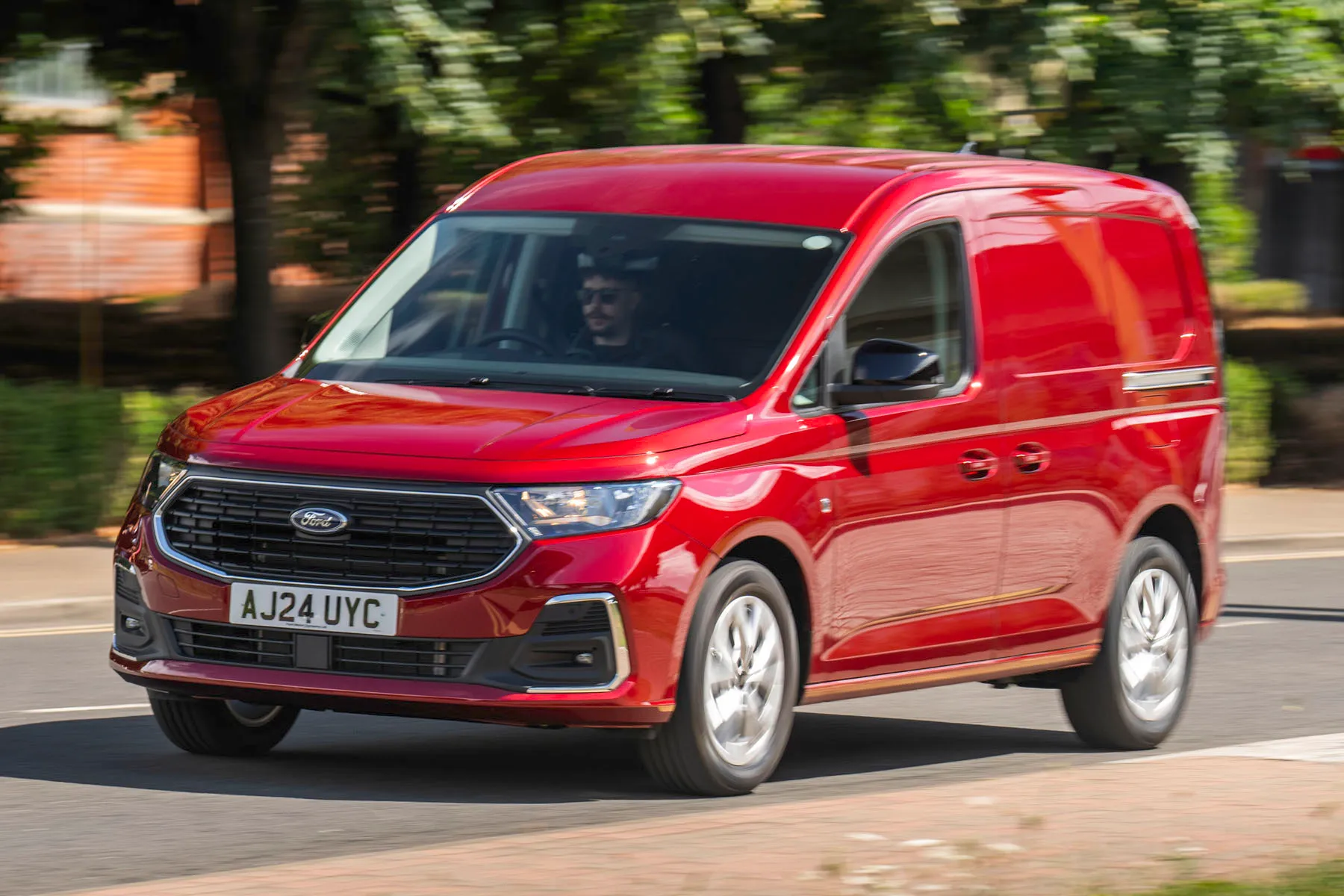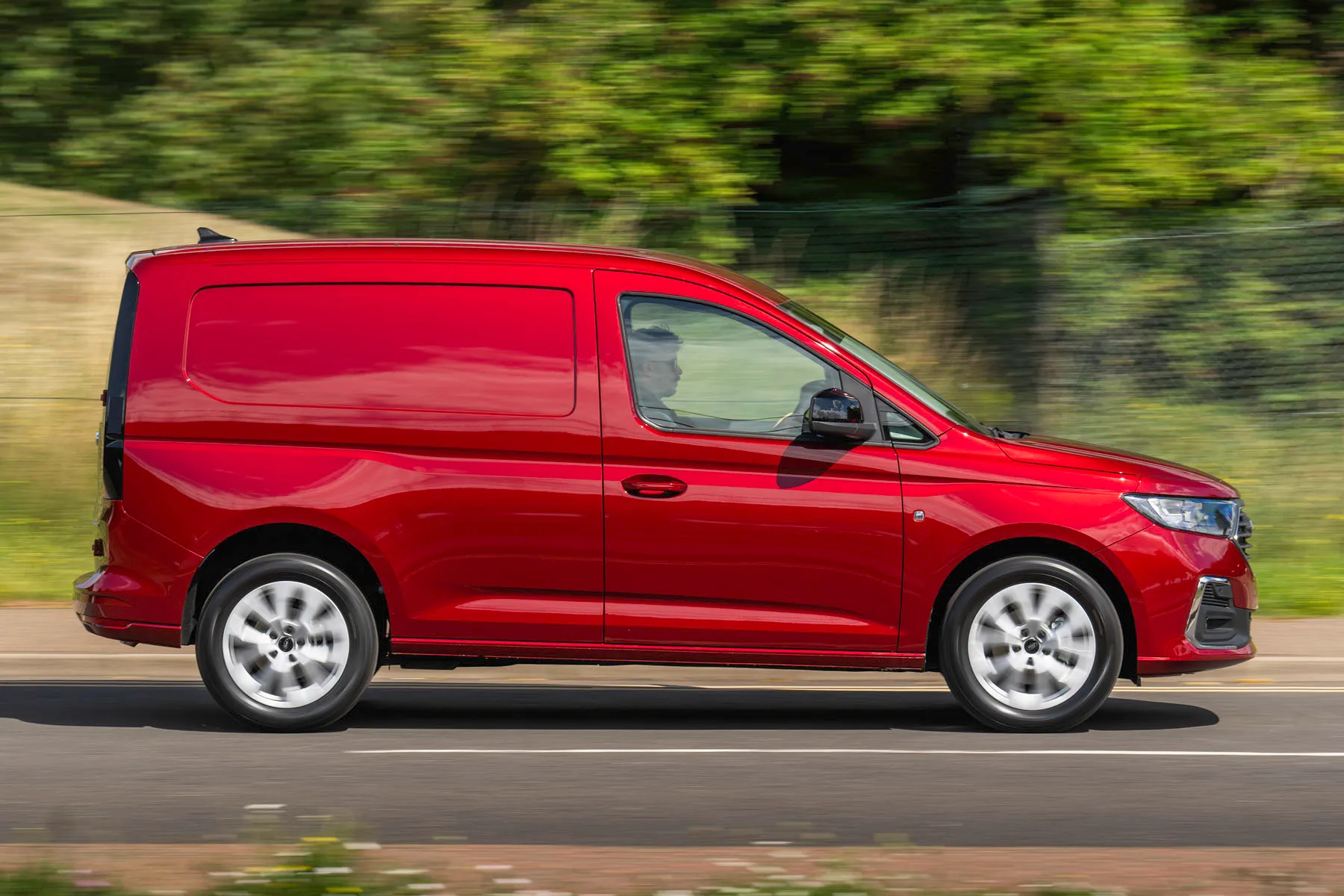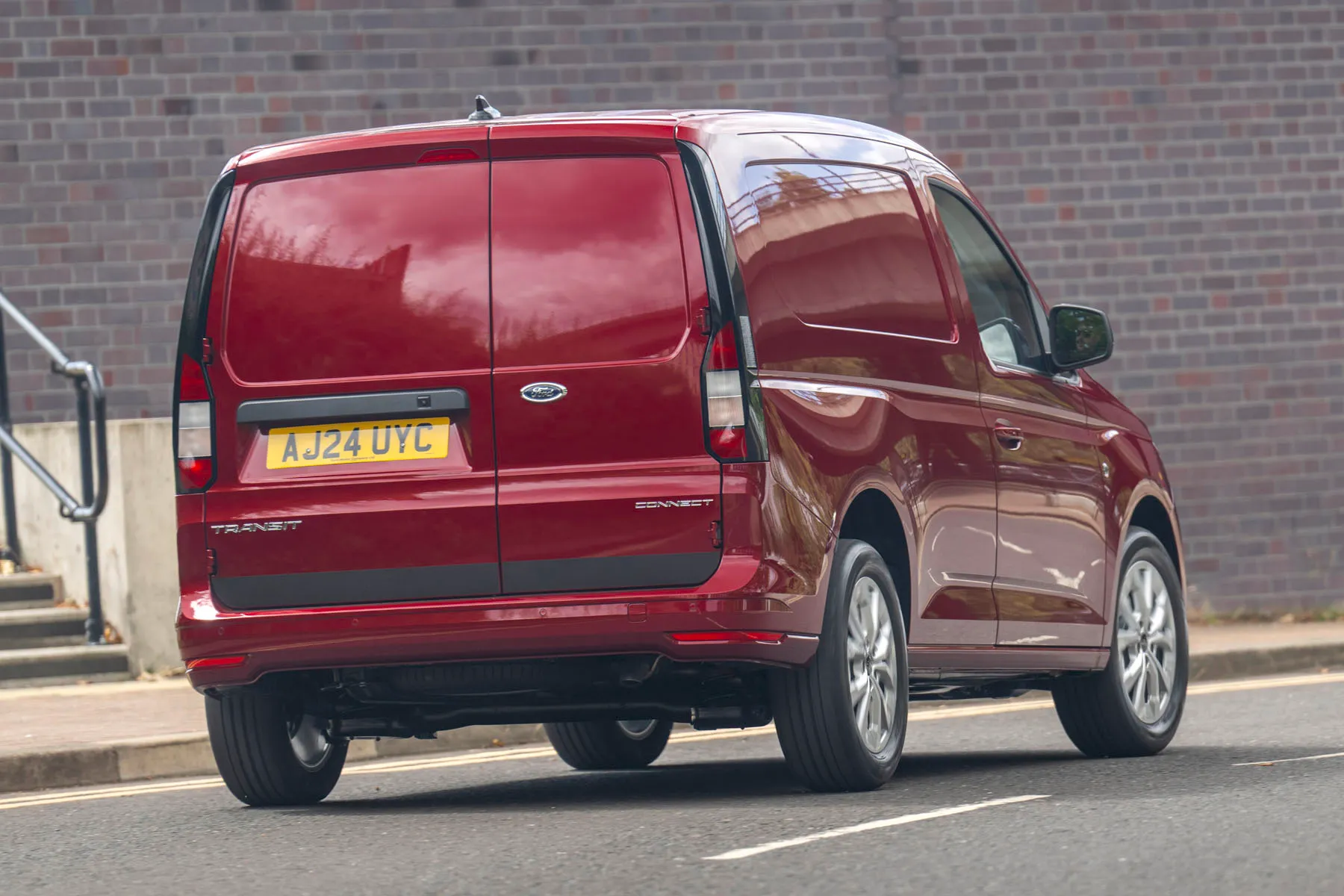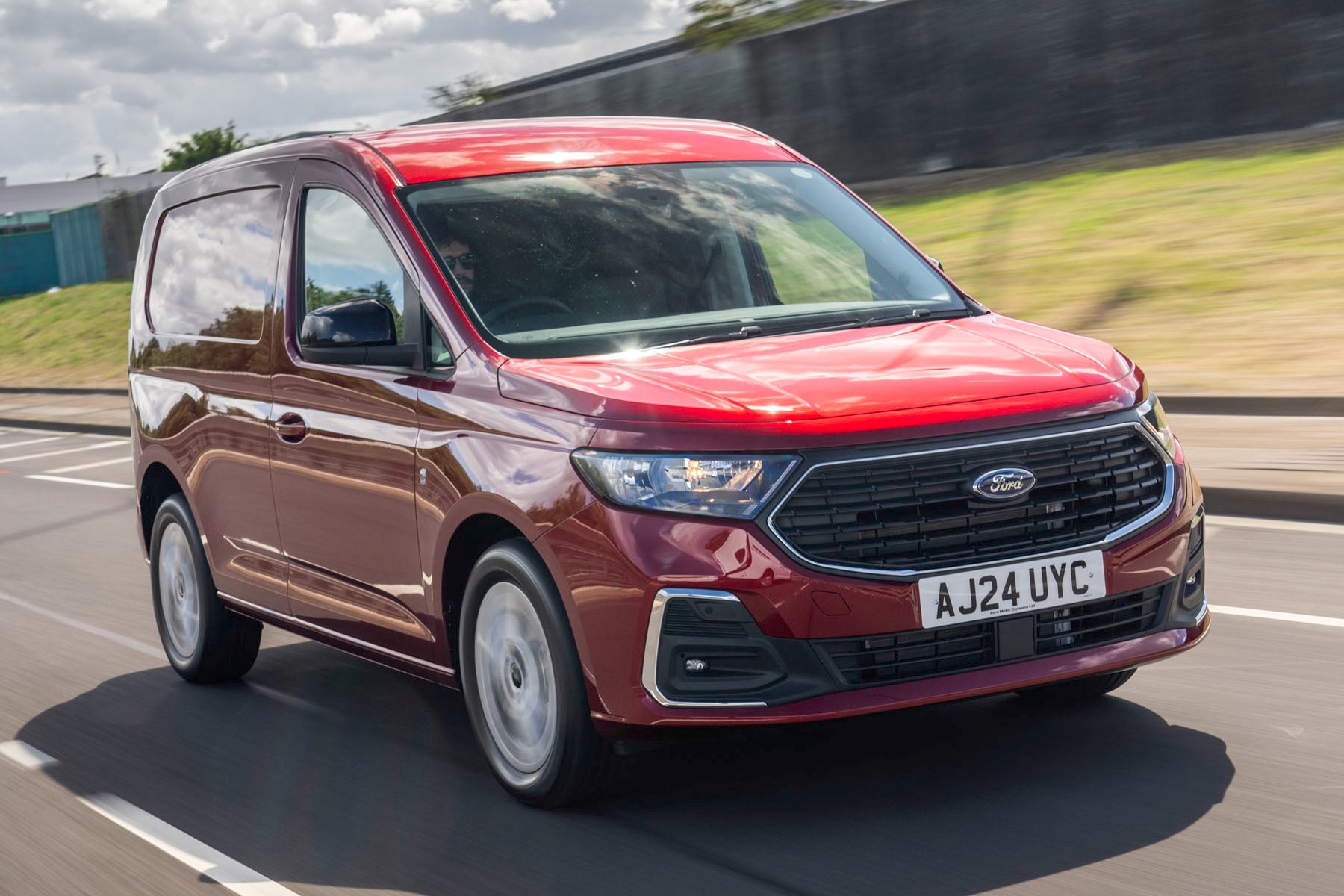Ford Transit Connect Review 2024
Written by Phill Tromans
Quick overview
Pros
- All-round improvement over earlier models
- Plug-in hybrid option adds appeal
- Two variants, two trim levels, with more to come
Cons
- Some rivals have larger payloads
- No electric option
- Small choice of engines
Overall verdict on the Ford Transit Connect
“There’s a lot to like about the Ford Transit Connect – there are several body variants to choose from, the engines are strong and there’s a good amount of equipment included. The availability of a plug-in hybrid version is a notable plus, too. However, it’s not a slam-dunk leader of the pack. The driving experience, while refined, doesn’t feel as agile as the old Transit Connect. The engine choice is small, there’s no electric model and the payload, while decent, isn’t as good as some rivals. For some, they might find that the Transit Connect’s boundaries lie outside their requirements where others fit very nicely. For those that do match its strengths and abilities, however, it’s a very decent bit of kit.”

The Ford Transit Connect has been a favourite for more than 20 years now, and this third-generation model has been on sale since 2021. Under the surface it shares much with the latest Volkswagen Caddy, which is no bad thing, because the Caddy is itself based on the Volkswagen Golf. As well as the various van variants it’s also available as a passenger car called the Tourneo Connect.
In theory, then, the Transit Connect is a car-based van, but Ford hasn’t just taken a Focus and blanked out the windows – it should drive like a car but have the practicality of a purpose-built van. Can that give it a boost in its battle against its small-van rivals? They’re numerous, and include the Caddy, the Citroen Berlingo, the Vauxhall Combo and the Peugeot Partner, not to mention the Mercedes-Benz Citan and the Renault Kangoo.
In case you’re not clear on the Ford Transit naming scheme, the Transit Connect sits above the Transit Courier in size, but below the Transit Custom.
The Ford Connect is available in short-wheelbase L1 and long-wheelbase L2 sizes. Right now there’s no Kombi version, but one is on the way with the plug-in hybrid powertrain. There’s a choice of two diesel engines and soon a petrol plug-in hybrid, which has an electric-only range of up to 68 miles.
Looking for a used van for sale? We've got 100s of Ford Approved Used Cars for Sale for you to choose from, including a wide range of Ford Transit Connect vans for sale. If you're looking for the old model, you can check out our Ford Transit Connect (2013-2022) review.
Is the Ford Transit Connect right for you?
The Transit Connect is far from a bad option, with a very decent driving experience, a comfortable cabin and reasonable space in the back. The availability of a PHEV version is a plus too if you mix around-town driving with longer distances. However, there are a number of areas where the Transit offers less than rivals. The space in the back isn’t class-leading, and with only two diesel engines to choose from, the powertrain options lag behind many rivals, too. There’s no suggestion that an electric option is on the way, which is something you can opt for with numerous rivals, as well as the larger Ford E-Transit.
What’s the best Ford Transit Connect model/engine to choose?
At the time of writing, the only engines available are two versions of the same 2.0-litre diesel engine. Neither are particularly powerful – the entry-level option is a 102PS lump with 280Nm and a six-speed manual gearbox. There’s also a powerful model, with 122PS and 320Nm, connected to a seven-speed auto ‘box. We’ve tried the former, and while it was perfectly adequate around town, that was with no load, and it felt like we had to work it hard getting up to motorway speed. If you work mostly in an urban environment and don’t lug particularly heavy cargo, it should be fine, but for longer journeys or weightier loads you may wish for the extra oomph.
In terms of trim level, you can choose from Trend or Limited – Trend is pretty well-specced for an entry-level model, but if you want niceties like alloy wheels and adaptive cruise control then go for the Limited. It’s £2000 more when new.
What other cars are similar to the Ford Transit Connect?
Those considering the Ford Transit Connect will likely want to consider its close rivals. These include the Volkswagen Caddy Cargo, which offers larger load space and higher payload capacity, and the Mercedes Citan, which looks and feels more premium. The Stellantis range of small vans – the Citroen Berlingo, the Peugeot Partner and the Vauxhall Combo Cargo – are all based on the same platform, and again offer more space.
Comfort and design: Ford Transit Connect interior
"The Ford Transit Connect’s cabin has a very contemporary and dare-we-say stylish look."

There's a digital driver’s display and touchscreen infotainment system that dominates the cockpit-like dashboard. As you’d expect of this size, it’s pretty car-like, with a long dashboard and steeply sloping windscreen.
Quality and finish
The Transit Connect has solid build quality with materials that manage to feel rugged and hard-wearing without feeling cheap and plasticky. It’s not as premium-feeling as a modern car, despite the look of the cabin, but it’s good for a van.
Infotainment: Touchscreen, USB, nav and stereo in the Ford Transit Connect
The infotainment system in the Ford Transit Connect is touchscreen-operated. In fact, just about everything that’s not a steering wheel, stalk or gear lever is touchscreen-operated, save for touch-sensitive buttons that operate the air-conditioning temperature.
The infotainment system itself, on a 10-inch screen, is easy enough to use, but it’s harder to change settings on the move than with physical buttons that you can feel.
The 10.25-inch digital driver display is clear and can show navigation directions if you use the in-built nav system, which makes it easy to quickly find your way through unfamiliar streets. Like most cars, this doesn’t work if you use Apple CarPlay or Android Auto directions, however. The good news is that you can easily change settings using the steering-wheel mounted buttons.
Those touch-sensitive buttons, by the way? Tricky to use, as it’s hard to tell if you’ve pressed them properly without looking at the display to see if anything’s changed. But it’s better than trying to tap through submenus on the screen.
Space and practicality: Ford Transit Connect boot space
The front of the Ford Transit Connect might look like a car, but it has just about all the practicality and storage space you’d expect of a van. Cubby holes, trays and other storage areas abound – there’s a tray on top of the dash and another small one in front of the gear stick with a fold-up shelf under which there’s a wireless phone charger. A fold-down pocket sits to the right of the steering wheel and there’s a reasonable size glovebox. There are two cup holders between the seats and a small storage box behind them towards the bulkhead – just watch you don’t accidentally drop anything down there, because much ferreting around to find it will follow. The door pockets are large and there’s a large storage area in the roof above the seats.
Out back, you’ll find 3.1 cubic metres of space in the L1 Transit Connect, and 3.7 cubic metres in the L2. Unsurprisingly considering their common engineering, that’s the same as in the VW Caddy Cargo, and it’s an increase from the 2.9 cubic metres you got in the old L1 Transit Connect. It’s bigger than the Mercedes Citan, too. There are asymmetric rear doors and a sliding door on the passenger side on L1 cars and dual side load doors on the L2. Maximum load length is 1797mm on the L1 and 2150mm on the L2, which is actually slightly less than the Citan.
In the back, you’ve got 2.9 cubic metres of space in the L1 model and 3.6 cubic metres in the L2. That’s the same as in the SWB and LWB Ford Transit Connects, but the standard Volkswagen Caddy Cargo will give you 3.1 cubic metres. Asymmetric rear double doors and a sliding door on the left are standard, with a right-hand sliding door optional. Unlike some rivals, there’s no hatch in the bulkhead to load through longer items. That means a maximum load length of 1806mm in the L1 and 2170mm in the L2.
When it comes to gross payloads, the L1 can carry up to 743kg with the 102PS engine, and the L2 expands that to 778kg. With the 122PS engine, those numbers are 737kg (L1) and 792kg (L2).
The PHEV Transit Connect has a payload of 690kg (L1) and 743kg (L2)
In comparison, the Mercedes Citan, which has only one engine choice, can pull up to 657kg (L1) or 661kg (L2). The VW Caddy Cargo can manage up to 718kg, while the likes of the Citroen Berlingo will haul up to 950kg.
Handling and ride quality: What is the Ford Transit Connect like to drive?
"The Transit Connect is car-sized, car-derived and, you’ll be surprised to hear, drives like a car, too. It’s unremarkable when judged by car standards, but for a van, it feels alert and lively, comfortable enough for a whole day of zipping about, and confidence inspiring and stable at high speeds."

We tried the lesser-powered diesel engine in the short-wheelbase L1, which has enough torque for nippy progress around town and just about enough grunt to get up to motorway speeds, but this was with an empty load bay – if you’ve got serious weight in the back then the gruntier diesel would be worth checking out. The manual gearbox is light and direct, and only available with the less powerful engine.
What engines and gearboxes are available in the Ford Transit Connect?
There are two diesel options in the Ford Transit Connect. Both use a 2.0-litre EcoBlue engine. The lower-powered model has 102PS and 280Nm, driving the front wheels through a six-speed manual gearbox, which gives it a leisurely unloaded 0-62mph time of 14 seconds dead.
The more powerful option has 122PS and 320Nm and uses a seven-speed automatic gearbox. That translates to a 11.4-second 0-62mph time.
There’s no electric Transit Connect but there is a plug-in hybrid on the way, combining a 1.5-litre EcoBoot petrol engine with an electric motor and a battery that promises up to 68 miles on electric-only power. It’ll be the most powerful Transit Connect, with 150PS and 350Nm through a six-speed dual-clutch automatic.
Refinement and noise levels
General refinement in the Transit Connect is rather good, keeping road noise and wind noise to a minimum. The diesel engine can be rather loud and clattery though, especially when you work it hard. As it’s not particularly powerful, that could be quite often.
Safety equipment: How safe is the Ford Transit Connect?
While the Transit Connect hasn’t been tested by safety organisation Euro NCAP, the Tourneo Connect – which is the passenger car version of the van – has. Well, sort of – EuroNCAP actually tested a VW Caddy, deeming the two similar enough for the scores to be carried across. The Caddy scored the maximum five stars in 2021, with solid scores across the various criteria, and pretty much everything that the experts said about the VW can be applied here, too.
All models come as standard with traffic sign recognition and lane-keep assist, as well as front and rear parking sensors. Plug-in hybrid models get a reversing camera, too, while Limited trim vans get a blind-spot assist system with rear cross-traffic alert. Those with an automatic gearbox get adaptive cruise control, too.
MPG and fuel costs: What does a Ford Transit Connect cost to run?
"The less powerful diesel engine, with 102PS, returns an official fuel economy of 52.1mpg in the L1 Transit Connect, and 51.2mpg in the L2."

Opt for the more powerful 122PS engine, and you can expect up to 50.5mpg in the L1 and 49.7mpg in the L2. These figures are based on the Trend trim – that figure drops very slightly in the Limited models, but you’re unlikely to notice the difference in the real world.
The CO2 figures for all versions are very similar and range between 142g/km and 149.
How reliable is a Ford Transit Connect?
The Ford EcoBlue diesel engine is well proven, with millions of units sold in various cars and vans around the world. However, it’s not been without its faults, particularly in vans. Blocked injectors have been reported as a particular issue, although that was in engines from a few years ago. More recently, owners have reported problems with excess oil consumption and premature damage failure of the timing belt, which runs in the engine oil. This issue was the subject of a recall in 2021, so fingers crossed that the issue has now been fixed on the latest Transit Connect.
Insurance groups and costs
Insurance groups for the Ford Transit Connect sit between 28 and 30, depending on the model.
VED car tax: What is the annual road tax on a Ford Transit Connect?
The Ford Transit Connect is a light goods vehicle, which means it’s subject to the standard flat rate of Vehicle Excise Duty (VED) – currently £335 a year.
How much should you be paying for a used Ford Transit Connect?
The latest Ford Transit Connect hasn’t been on sale for long, so used prices are not yet well established.

We’ll update this when we know what they’re fetching on the used market. For now, new prices start at £23,500 plus VAT.
Trim levels and standard equipment
There are two trims to choose from on the latest Ford Transit Connect, both of which are available on L1 and L2 vans.
The basic trim is Trend, which rides on steel wheels, comes with a body coloured front bumper but unpainted door handles and mirrors, although the mirrors are heated. Halogen headlights light the way, while there’s a quick-clear windscreen defroster, which is very useful on a frosty morning. Inside, you get the full 10-inch infotainment screen with wireless Apple CarPlay and Android Auto, as well as manual air conditioning and rubber cab floor cover.
Upgrade to the Limited model and you’ll get 17-inch alloy wheels, chrome surrounds on the grille and fog lights and body coloured handles and mirrors, which gives a more premium look. The mirrors fold when the van is locked. The Limited model also gets the digital driver display and extra lighting in the cargo area, as well as dual-zone air conditioning and a wireless charging pad. Hands-free engine start and a dead-locking system is included, too.
Ford has also announced that an Active kombi model is on the way, with more rugged styling, LED lights and roof rails.
Ask the heycar experts: common questions
What is the difference between the Ford Transit and the Ford Transit Connect?
Is Ford discontinuing the Transit Connect?
Can you get an electric Ford Transit Connect?
Ford Transit Connect Alternatives
Get our latest advice, news and offers
Keep me updated by email with the latest advice, news and offers from heycar.
By submitting you agree to our privacy policy





